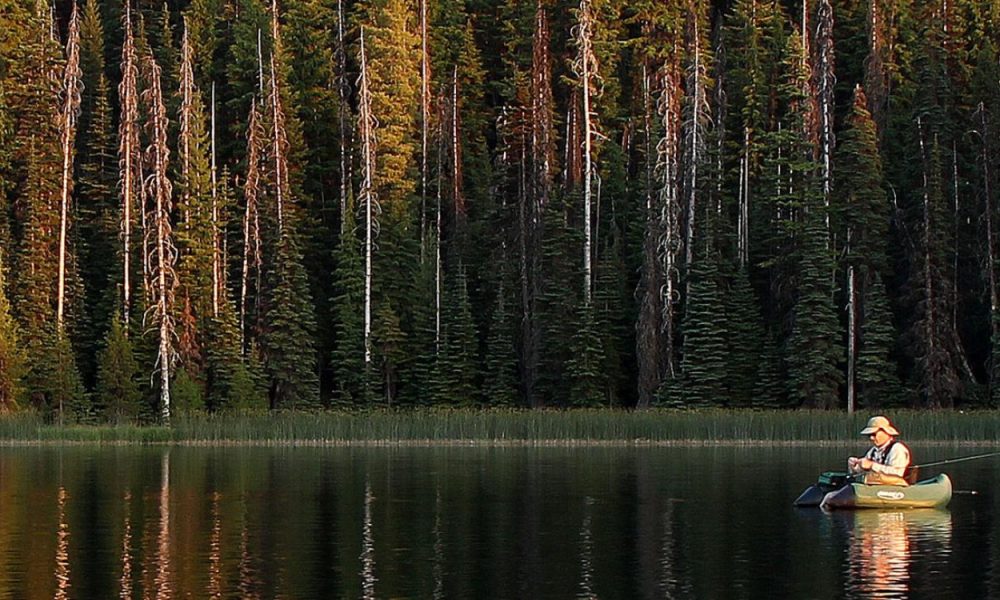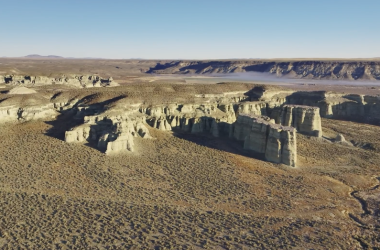In her proposed budget to the Legislature, Gov. Tina Kotek called for nearly $500 million in funding for the Oregon Department of Fish and Wildlife.
That sum would mark a 2.5% increase in the department’s budget – but it falls short of the more than $550 million the department requested. Without that extra money, advocates say, the department would have to trim crucial programs that protect wildlife habitat, sustain healthy fish populations and control agricultural pests.
Dozens of speakers testified at a hearing last week of the Joint Ways and Means Subcommittee on Natural Resources, asking for some of that funding to be restored as part of Senate Bill 5509.
“The Oregon Department of Fish and Wildlife is a driver of Oregon’s conservation strategy,” Kate Natoli and Lauren Link of the Nature Conservancy said in written testimony. “ODFW needs adequate funding to carry out its statewide mission.”
The hearing came the same week as the release of a tight budget outlook, with lead Oregon lawmakers predicting they may have to make some adjustments to increase spending in priority areas. Nevertheless, the Department of Fish and Wildlife partially funds itself through hunting and fishing license fees and federal grants. It would only need about $90 million from the general fund to meet its budget request.
The hearing drew a wide range of advocates, including a fisherman from Depoe Bay, a hunter from Sublimity, Portland-based environmental activists, and wildlife rehabilitators from Pendleton, Sisters and Corvallis. All argued for adding back pieces of the department’s requested budget that were cut by Kotek.
Several speakers testified in favor of restoring funding to the department’s Wildlife Coexistence Program, a $2 million program meant to educate Oregonians about living alongside wildlife and supporting wildlife rehabilitation centers across the state. Last April, staff members from Oregon Department of Fish and Wildlife, Oregon State Police and several nonprofit wildlife organizations proposed the program, and the department included it in its budget request. It was not in Kotek’s budget.
“A wildlife coexistence program in Oregon would help people share the landscape, urban, rural and everything in between with wildlife,” said Quinn Read, Oregon policy director for the nonprofit Center for Biological Diversity. “A modest investment here would have a big impact.”
Fish and water quality funding was another frequent topic in both written and spoken testimony. Speakers from organizations including Trout Unlimited, the Wild Salmon Center and the Northwest Sportfishing Industry Association testified in favor of increasing fish habitat and water programs. These were also a priority for tribal members, including Brenda Meade, chairman of the Coquille Indian Tribe, who testified in writing.
“Our most urgent priority is restoring the Coquille River and staving off the extinction of its fall chinook,” Meade said in written testimony.
She said the Tribe has spent hundreds of thousands of dollars to reduce nonnative smallmouth bass that prey on young salmon and expects the Oregon Department of Fish and Wildlife to make a similar contribution. Salmon have vital nutritional, economic, cultural and spiritual value to the Coquille and other local Indigenous people of the Northwest. Maintaining access to fish and fishing grounds is also a key treaty right of Northwest Indigenous people.
The hearing grew heated over funding for predator and nuisance animal control, which is contracted out to Wildlife Services, a division of the U.S. Department of Agriculture. Critics of Wildlife Services said it uses inhumane tactics such as painful traps and unnecessary killing of nuisance wildlife.
“It has just a really terrible reputation for over emphasizing the killing of wildlife as the solution to human wildlife conflicts,” said Brian Posewitz of Humane Voters Oregon, an animal welfare advocacy group.
Posewitz said Wildlife Services had killed 210 bears, about 2,150 coyotes and about 90 mountain lions in Oregon between 2019 and 2020 alone, according to its annual report. More than 90% of the animals killed by the agency that year were European Starlings, nonnative birds that can damage grain and orchard crops.
Other speakers, including Branden Pursinger of the Oregon Association of Counties, argued that Wildlife Services provides a vital service for county and local governments across Oregon that lack wildlife expertise, and that the agency is often able to relocate dangerous or nuisance animals that would otherwise have to be killed.
“These communities rely on Wildlife Services to address issues brought about by cougars, rodents, coyotes, elk, birds, bears, and many other wildlife species,” said Pursinger.
Oregon Capital Chronicle is part of States Newsroom, a network of news bureaus supported by grants and a coalition of donors as a 501c(3) public charity. Oregon Capital Chronicle maintains editorial independence. Contact [email protected]. Follow Oregon Capital Chronicle on Facebook and Twitter.




